Tamago yaki, the beloved Japanese rolled omelet, is a true culinary gem that will leave you craving for more. In Japan, tamagoyaki is commonly found in Japanese homes, as well as in restaurants and specialty shops. It is also a popular street food and you can find it in food stalls and markets. Whether you’re an adventurous foodie or simply curious about Japanese cuisine, tamagoyaki is a must-try dish that will transport you to the heart of Japan’s culinary delights.
What is Tamago Yaki?
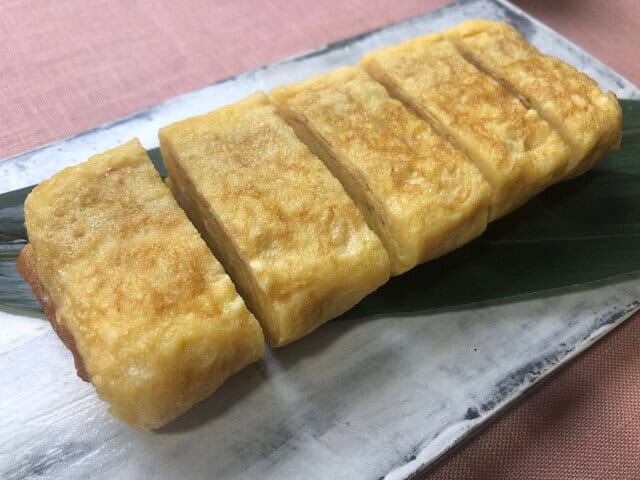
Tamago yaki is a popular Japanese dish often referred to as a rolled omelet or Japanese-style omelet. Locals made it by whisking together eggs, soy sauce, mirin (sweet rice wine), and sometimes sugar, and then rolling the mixture into thin layers as it cooks. Tamagoyaki is a versatile dish that you can enjoy on its own as a snack or side dish, or used as a component in other dishes such as sushi, bento boxes, or as a topping for rice. It is popular for its slightly sweet and savory flavor and has a distinctive texture that is both fluffy and slightly firm.
Tamago yaki History
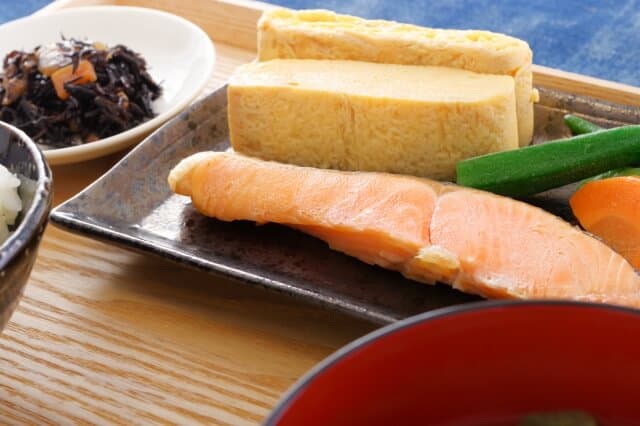
For a long time, Japanese people rarely ate eggs because of their Buddhist beliefs. Western sweets using eggs were introduced in the 16th century, and from around this time, people gradually began to eat eggs. Tamagoyaki, with a history dating back centuries and likely influenced by Chinese culinary techniques, has become an integral part of Japanese cuisine. During the Edo period, it gained popularity as a nutritious dish served in teahouses for breakfast. The association between tamagoyaki and the Edo region solidified its status as a staple food item.
As Japan underwent modernization and Western influence in the Meiji period, tamagoyaki evolved with the introduction of Western-style omelets, blending Japanese and Western cooking techniques and experimenting with new flavors. Following World War II, tamagoyaki became widely available as street food and found its way into bento boxes, becoming a popular choice for convenient lunches and snacks. Today, tamagoyaki remains a beloved and iconic dish found in homes, restaurants, and specialized tamagoyaki shops, with various creative variations catering to diverse tastes while maintaining its traditional preparation method.
How do the Japanese prepare their Tamagoyaki?
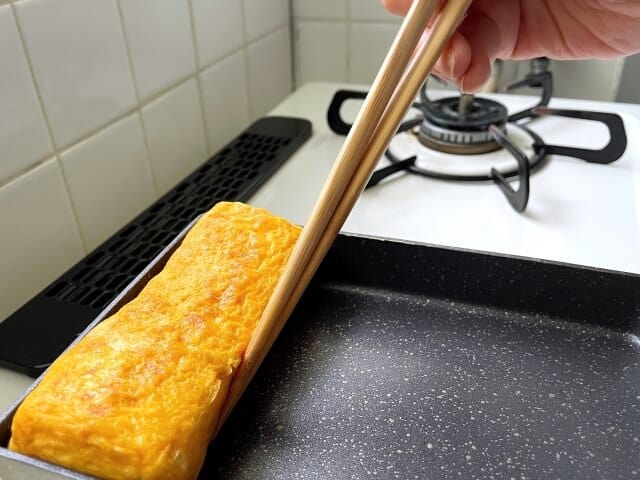
To prepare tamagoyaki, you need a rectangular frying pan known as a makiyakinabe, specially crafted for this dish. Start by coating the pan with oil, then pour a small portion of the egg mixture into it, spreading it out to create a thin layer. Once the bottom layer sets, skillfully roll it up using a unique rolling technique. Add another layer of the egg mixture, roll again, and continue this process until you achieve the desired thickness and number of layers.
Tamagoyaki in Kansai and Kanto region
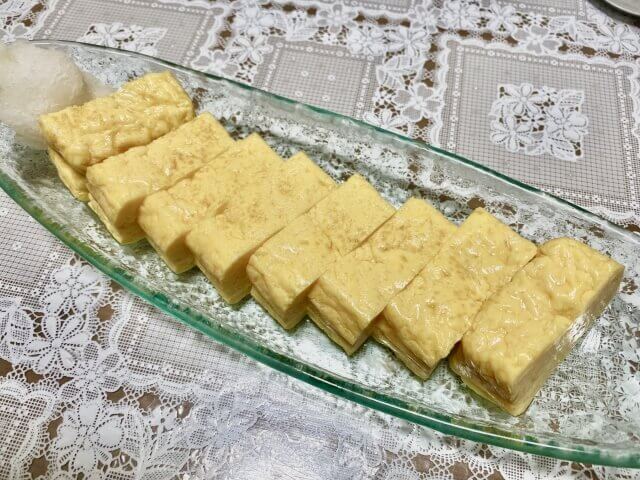
Locals eat tamagoyaki all over Japan, but there are also differences about Tamagoyaki in Kansai and Kanto region.
Cooking style
In terms of cooking, the ingredients used in tamagoyaki are generally similar in both regions, including eggs, soy sauce, and mirin. However, there may be slight variations in the seasoning proportions or additional ingredients used to customize the flavor. For example, in Kansai, it is common to add dashi to the tamagoyaki mixture, which adds a subtle umami taste. In contrast, Kanto-style tamagoyaki often focuses on the natural sweetness of the eggs and may have a slightly sweeter flavor profile.
Shape
The shape of tamagoyaki can also differ between regions. In Kansai, tamagoyaki is typically prepared in a square or rectangular shape, reflecting the influence of the traditional rectangular frying pan used in the region. On the other hand, in the Kanto region, tamagoyaki is often rolled into a cylindrical shape, resulting in a more compact and portable presentation.
Accompaniment
When it comes to eating tamagoyaki, the serving style may vary as well. In Kansai, tamagoyaki is often enjoyed as part of breakfast or as a side dish in a traditional Japanese meal. They served it as a standalone dish or accompanied by other small dishes such as pickles and miso soup. In Kanto, tamagoyaki is commonly found in bento boxes, sushi rolls, or as a topping for rice bowls.
Tamagoyaki pan
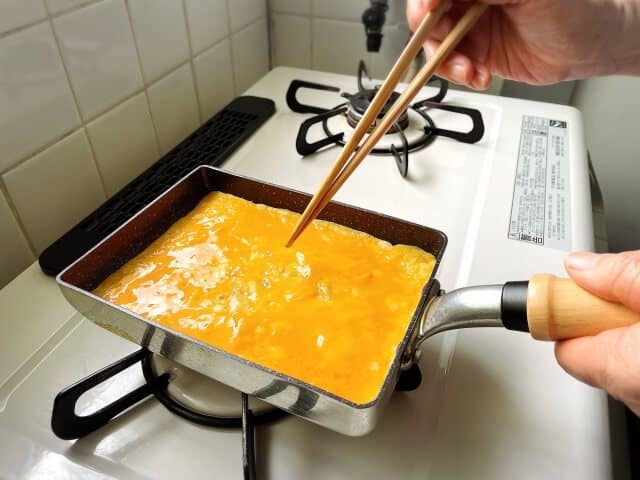
There are three main types of tamagoyaki makers: the square Kanto type, the vertically long rectangular Kansai type, and the horizontally long rectangular Nagoya type. In the Kanto region, tamagoyaki is known for being slightly sweet and thick, often seen in Edomae sushi. They typically made them by browning the omelet slowly, using plenty of eggs, flipping it once, and folding it to half the width. The square shape is believed to match the original size.
In contrast, the Kansai style is rectangular, influenced by Kansai’s culinary culture. It features a rolled omelet with tamagoyaki dashi, using a looser and smoother egg mixture that requires multiple flips to achieve the desired shape. The Kansai-style tamagoyaki maker is commonly used in households today. As for the Nagoya, the type differs by being rolled up using a spatula, with a preference for a horizontally long shape. Unfortunately, the Nagoya type has become scarce in recent times.
Tamagoyaki pans, used for making Japanese omelettes, can be made from iron, copper, or stainless steel. Each material has its characteristics and affects the cooking process and final result. Iron pans have excellent heat conductivity and retention, develop a natural non-stick surface when seasoned, and require maintenance to prevent rust. Copper pans offer superior heat conductivity, and precise temperature control, but may react with acidic foods and need lining. Stainless steel pans are durable, non-reactive, resistant to rust, and easier to clean, but may require more oil or non-stick coating. The choice depends on heat distribution, non-stick properties, maintenance, and personal preference.
For Online Shopping
For those who want to order or buy tamagoyaki pan in Japan, you can mail it to your home via online on Rakuten. Just click here to see some shops that sell Tamagoyaki pans. And for those who want to order or buy tamagoyaki pan but live away from Japan. You can ship them from Rakuten. Rakuten offers International Shipping Service so do not worry about how to receive your items. Rakuten Global Express is an online shopping service that allows users to shop at stores in Japan.
Sign up
First, you need a Rakuten ID. If you are already a Rakuten member, you can start using Rakuten Global Express. If you have not registered yet, click here.
Get your personal RGX address
After signing up, you will get a Japanese address: a Rakuten Global Express address.
Shop at stores in Japan
Now that you get yourself a personal RGX address (Rakuten Global Express address). You can shop online in Japan, click here to shop for Tamagoyaki pans (not only Rakuten but other online stores are also included).
When you have decided on your items, set the delivery address to your Rakuten Global Express address.
Confirm items
After items are shipped to the RGX address, they will be packed into one package. You also receive an email upon confirming these items and payment.
Once the payment is confirmed, your package will be delivered within a designated time period depending on your shipping choice.
Tamago yaki FAQ
- What are the common ingredients of Tamago yaki?
-
Tamagoyaki, the Japanese rolled omelet, is made with eggs, soy sauce, mirin, and optional sugar. These ingredients provide the base, savory flavor, gentle sweetness, and glossy appearance. Variations allow for the addition of dashi, vegetables, cheese, nori, or other seasonings to personalize and create unique renditions of this delightful dish.
- What does the name “Tamago Yaki” means?
-
The name “Tamago Yaki” originates from the Japanese language. “Tamago” means “egg” in Japanese, while “yaki” translates to “cooked” or “grilled.” Therefore, “Tamago Yaki” literally means “cooked egg” or “grilled egg.” The term “Tamago Yaki” has been used for centuries in Japan to refer to this popular dish.
Tamago yaki Recipe
Tamago yaki Ingredients
| Ingredients of Tamago yaki for 1 person | Measurements |
|---|---|
| Egg | 46g |
| Soup stock | 14g |
| [Seasoning] Sugar | 3g |
| [Seasoning] Salt | 1.5g |
| [Seasoning] Soy sauce | 2g |
| Oil | 5g |
How to make Tamago yaki
Break the eggs and mix all the dashi stock and seasonings.
Heat oil in an egg pan, wipe off excess oil, pour in 1/4 of the egg mixture and spread evenly. When the surroundings are dry and soft-boiled, roll them with chopsticks. Add oil again and repeat.
When it’s baked, roll it up with a rolling paper, leave it until it is warm, and cut it into pieces.
Where to buy Tamago yaki?
Tamagoyaki Ozawa (玉子焼 おざわ)
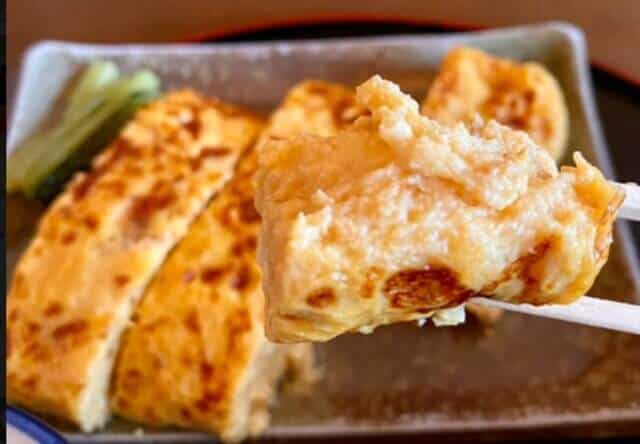
A tamagoyaki specialty store located in the back alley of Kamakura Komachi Street. It is a simple menu with 3 pieces of hot and fluffy tamagoyaki, rice, miso soup, and nozawana, but it’s very delicious. The signboard menu “Tamagoyaki Gozen” is a set of plump and thick omelets, miso soup and rice. Their tamagoyaki is plump with plenty of dashi stock.
Yagenbori (やげんぼり)
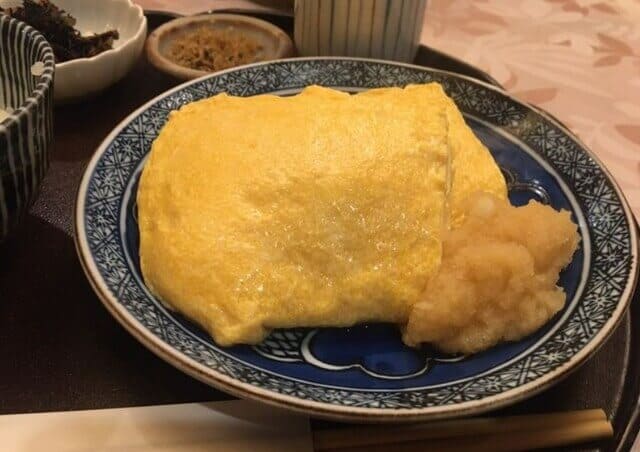
This is a restaurant where you can enjoy traditional Kyoto cuisine. For dinner, the course menu, where you can enjoy seasonal ingredients, is popular, but even if you can’t afford dinner, you can still enjoy lunch at a reasonable price. Their popular lunch menu is the “Yasaka”. This gozen set includes dashi maki omelet, red miso soup, rice, and a small bowl. The large dashi maki omelet is soaked in plenty of dashi stock and goes perfectly with rice.
Ranway 卵道 (ランウェイ)
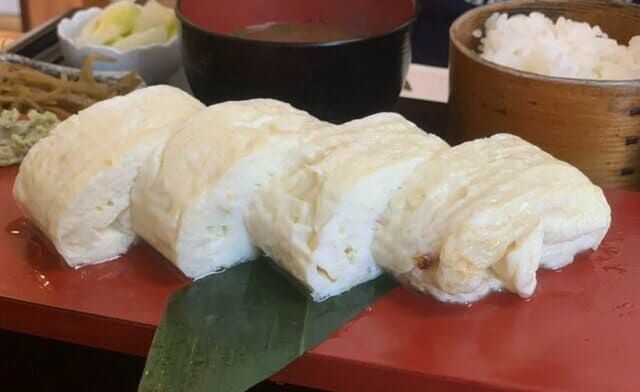
Here, you can have a plump and fluffy texture of thick dashi-maki tamago. The popular set meal comes with rice, miso soup, and a side dish! At this restaurant, the shop recommends trying their “Shira-dashi Maki Teishoku”, which contains an unusual pure white dashi-maki tamago. Their pure white tamagoyaki doesn’t have the yolk, it’s all made with pure white eggs.
Takeaway
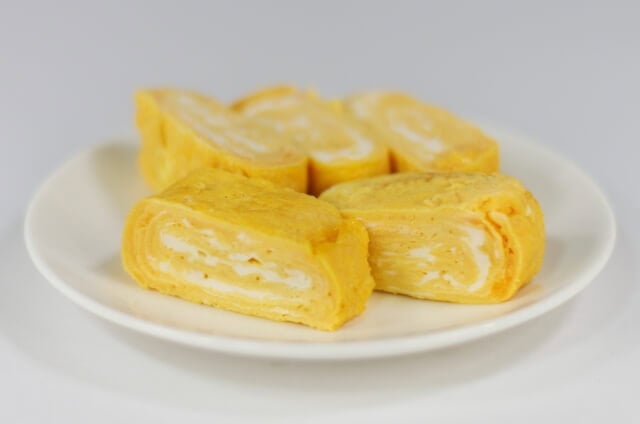
If you haven’t experienced the joy of Tamagoyaki yet, it’s time to give it a try. This iconic Japanese dish offers a delightful blend of flavors and a unique texture that is both fluffy and slightly firm. Whether you savor it on its own, incorporate it into sushi, or bento boxes, or enjoy it as a topping for rice, Tamagoyaki promises a culinary adventure worth embarking on. Its rich history, versatile nature, and the artistry involved in its preparation make it a must-try delicacy. So, seize the opportunity to indulge in the deliciousness of Tamago Yaki at least once in your lifetime and savor a true taste of Japan’s culinary heritage.
You can check some Japanese egg dishes that we know you would like to try too.
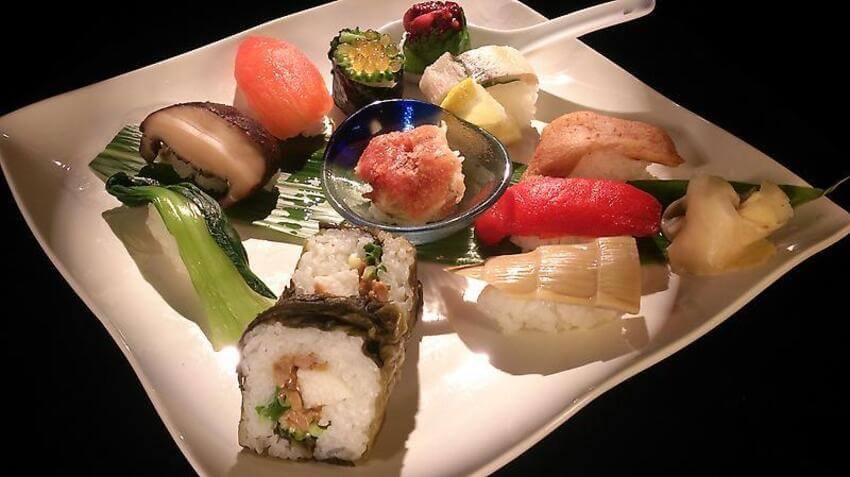





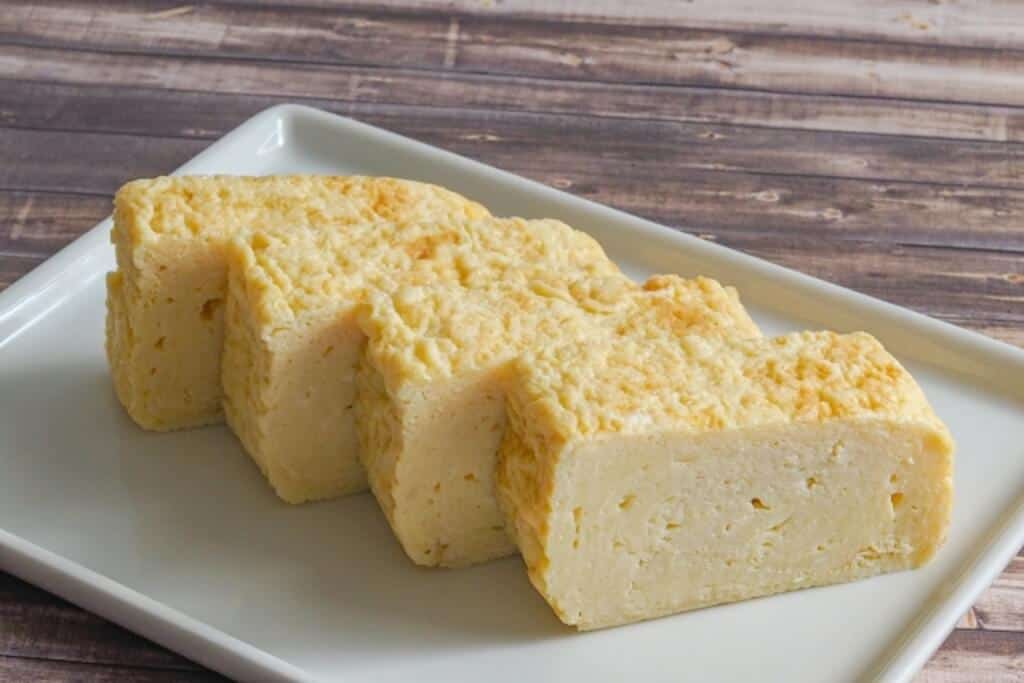
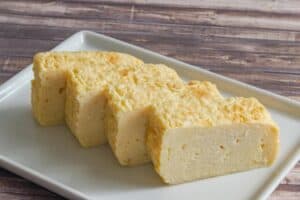
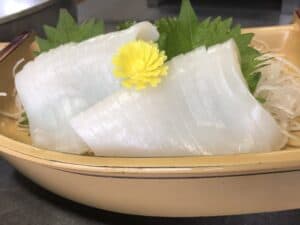
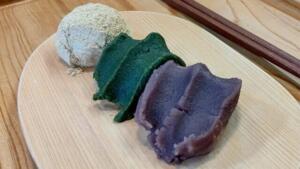
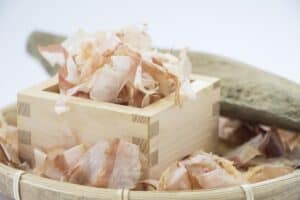
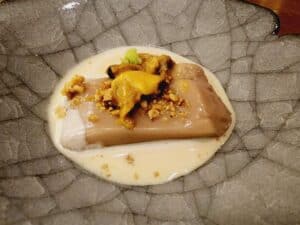
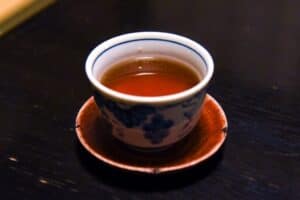
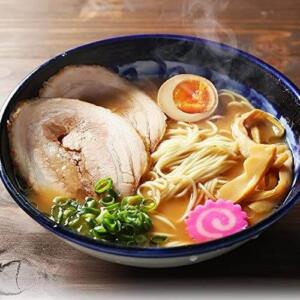
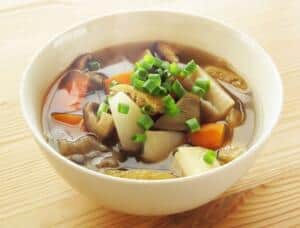
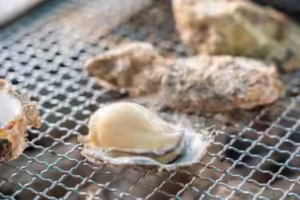
Comments